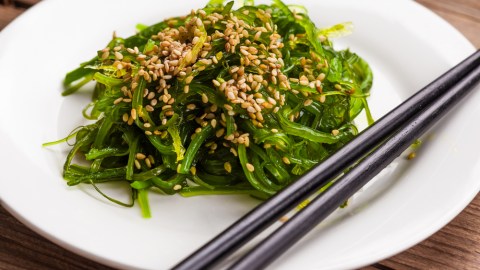Seaweed: In a World Hungry for Protein, It’s the Kale of Meat

Meat consumption is increasingly seen as a health risk, an environmental risk, and a misuse of precious land and water resources. Meat substitutes, however, have so far proven unsuccessful. Fake meat grown in a lab has proven costly and is widely mocked; eating bugs, which are rich in protein and nutrients, is simply unpalatable; substitutes such as (soy) beans still require much land and water for farming.
Enter seaweed…
Already on the shelves at stores like Whole Foods, suggesting that early adopters are comfortable with the idea of eating the green sea vegetable, seaweed is high in protein and other nutrients. Should demand for meat become unsustainable, seaweed may provide a ready alternative:
A 2010 Wageningen University study estimated that a seaweed farm covering 180,000 square kilometres – roughly the size of Washington State – could provide enough protein for the world’s population. And scientists at Sheffield Hallam University have previously concluded that seaweed granules could replace salt (pdf) in cheese, bread, sausages and processed food such as supermarket ready meals.
Before seaweed becomes available at your favorite burger restaurant, a culture-wide change must take place. Or as professional chef Andrew Carmellini says, consumer demand must drive food choices. Restaurants and food suppliers can never successfully dictate to customers what they want to eat:
Read more at the Guardian
Photo credit: Shutterstock




